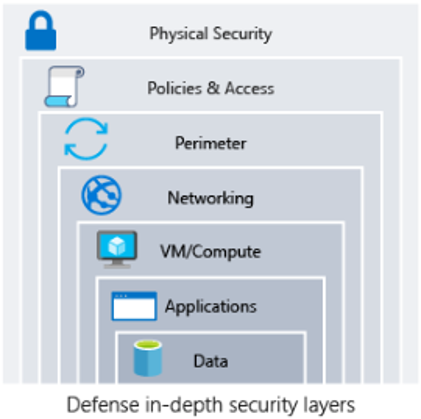Article The 4 Pillars for Designing a Reliable Architecture in Azure

By Insight UK / 2 Mar 2020 / Topics: Cloud

By Insight UK / 2 Mar 2020 / Topics: Cloud
One of the biggest challenges for cloud service providers moving to Azure is where to start. How to build an architecture in Azure that is secure, scalable, available, efficient and cost-effective? The general feeling is that the cloud can never be as good as the on-premise data centre. From my experience, I dare to say that an architecture designed and built in Azure on the four pillars below, surpasses any on-premise data centre. Let’s take a look.
Four pillars as a solid foundation for building a great architecture in Azure
Security is the most important element in designing any architecture today. Sensitive and critical data, identities and infrastructure must be adequately protected against security breaches, hacking, malware, phishing, and comply with regulatory and legal requirements.
Although the cloud and security are not always seen as the best friends, Azure offers a level of security that easily surpasses any on-premise data centre. Microsoft invests more than 1 billion US dollars per year, has more than 3,500 people working on security on a daily basis. Is there any service provider who operates on this scale? Besides Microsoft has more than 17 million customers. This comes with the economy of scales: a big company as Microsoft with over 100 data centres all over the world can simply offer better prices.
Security in an Azure architecture is a multi-layered approach. I usually compare it to an onion: each layer focuses on a different area, ensuring hackers will always find many barriers on their way to the most valuable asset of the organisation: data. Azure offers defense in depth at all layers by default, securing technology, people and processes.

When a service provider’s business grows and more customers are onboarded, they need more capacity. On-premises this means new hardware (CapEx), installation, provisioning, staff, extra electricity, cooling, etc. Not in Azure. Growing demands are met by scalability with a few mouse clicks – up and down, in or out – providing maximum flexibility in compute resources and optimum performance. In order to make life easier in the cloud, automation is one of the key principles. Scripting, autoscaling, monitoring are the answers for optimum performance and high availability.
Unplanned downtime or data loss leads to financial losses or reputation damage. That is why an architecture must always be available and recoverable, even in the event of failure, network outages, (natural) disasters, attacks. Where the on-premise data centre requires a redundant, physical architecture, Azure provides all levels of availability and recoverability ‘as a service’ to ensure that services are restored with minimal effort. There is even an option for regional spread over different data centres with a distance of more than 300 km from each other.
Building an architecture in the cloud, you want to achieve high quality, increased speed, high efficiency at lower costs. Cost optimisation, automation and monitoring are essential practices in Azure to optimise the environment, maximise maintainability and ensure requirements are met. One example is example is the Azure portal, that gives full visibility into what is happening in your environment from a single pane of glass, even in a hybrid cloud environment.
The next step is to learn and experience how these pillars work in practice, either in a test environment or together with one of your customers. Open a trial account for one year (get 170 euros bonus to spend), create a high-available environment, set up a user, enable Multi-Factor Authentication (MFA), apply conditional access and privileged identity management, try and test security, deploy advanced ID and security features and see how it works.
With these pillars of architecture, you can be confident that you have paid sufficient attention to every aspect of building a great, reliable architecture in Azure that meets the needs of service provider customers now and in the future.
For more information on architecting solutions on Azure: